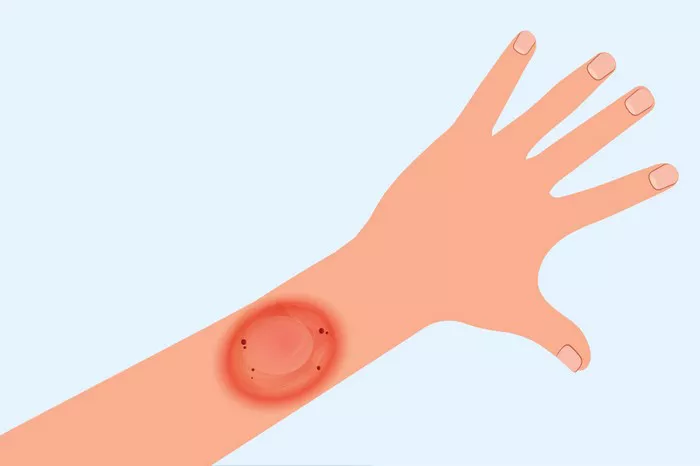Vitiligo is a long-term skin condition characterized by patches of the skin losing their pigment. It occurs when the melanocytes, the cells responsible for producing skin pigment, are destroyed. This condition can affect people of any age, gender, or ethnicity, but it is more noticeable in individuals with darker skin tones. Understanding the signs of vitiligo is crucial for early diagnosis and management. In this article, we will explore the various symptoms and signs associated with vitiligo, its progression, and the impact it has on those affected.
Early Signs of Vitiligo
1. Appearance of Depigmented Patches
The hallmark sign of vitiligo is the appearance of depigmented patches on the skin. These patches can appear anywhere on the body, but they are more common in areas exposed to the sun, such as the face, neck, hands, and arms. Initially, these patches may be small and few in number, but over time, they can grow larger and spread to other areas of the body.
2. Symmetrical Patches
One of the distinguishing features of vitiligo is the symmetrical nature of the patches. This means that if a patch appears on one side of the body, a similar patch is likely to appear on the other side. For instance, if a person has a depigmented patch on the right hand, it is common to see a similar patch on the left hand.
3. Rapid Depigmentation
In some cases, the depigmentation process can occur rapidly. A person may notice a sudden onset of white patches within a short period. This rapid spread can be alarming and is often a key indicator for seeking medical advice.
Progression and Variability of Vitiligo
1. Unpredictable Course
The progression of vitiligo is highly unpredictable. In some individuals, the depigmented patches may remain stable and not spread further, while in others, the condition can progress rapidly, with new patches appearing continuously. The variability in progression makes it challenging to predict the course of the disease.
2. Koebner Phenomenon
A notable characteristic of vitiligo is the Koebner phenomenon. This refers to the development of new depigmented patches at sites of skin injury or trauma. For example, if a person with vitiligo sustains a cut or burn, depigmentation may occur in the affected area during the healing process.
3. Changes in Hair Color
In addition to skin depigmentation, vitiligo can also affect hair color. The hair within the depigmented patches may turn white or gray. This can occur on the scalp, eyebrows, eyelashes, and other body hair. Changes in hair color are a significant sign and can be distressing for individuals with vitiligo.
Associated Symptoms and Conditions
1. Sensitivity to Sunlight
Individuals with vitiligo often experience increased sensitivity to sunlight. The depigmented patches lack melanin, which provides protection against ultraviolet (UV) radiation. As a result, these areas are more susceptible to sunburn and require diligent sun protection measures, such as using sunscreen and wearing protective clothing.
2. Psychological and Emotional Impact
The visible nature of vitiligo can have a profound psychological and emotional impact on affected individuals. The appearance of white patches on the skin can lead to feelings of self-consciousness, low self-esteem, and social anxiety. It is not uncommon for people with vitiligo to experience depression or anxiety related to their condition.
3. Association with Autoimmune Disorders
Vitiligo is often associated with other autoimmune disorders. Studies have shown that individuals with vitiligo have a higher risk of developing autoimmune conditions such as thyroid disease (Hashimoto’s thyroiditis and Graves’ disease), type 1 diabetes, rheumatoid arthritis, and lupus. This association suggests a possible common underlying immune system dysfunction.
Diagnosis and Medical Evaluation
1. Clinical Examination
The diagnosis of vitiligo is primarily based on clinical examination. Dermatologists look for the characteristic white patches on the skin and assess their distribution and symmetry. A detailed medical history is also taken to identify any associated symptoms or underlying conditions.
2. Wood’s Lamp Examination
A Wood’s lamp, which emits ultraviolet light, can be used to examine the skin more closely. Under the Wood’s lamp, areas affected by vitiligo appear bright white or blue-white, helping to distinguish vitiligo from other skin conditions that may cause depigmentation.
3. Biopsy and Laboratory Tests
In some cases, a skin biopsy may be performed to confirm the diagnosis. The biopsy involves taking a small sample of the affected skin and examining it under a microscope. Laboratory tests, including blood tests, may also be conducted to check for associated autoimmune disorders and to rule out other potential causes of depigmentation.
SEE ALSO: Is Vitiligo Passed on Genetically
Management and Treatment Options
1. Topical Treatments
Topical corticosteroids and calcineurin inhibitors are commonly prescribed to help reduce inflammation and slow the progression of vitiligo. These medications are applied directly to the affected areas of the skin and can help to restore some pigment.
2. Phototherapy
Phototherapy, also known as light therapy, involves exposing the skin to ultraviolet light. This treatment can help to stimulate melanocyte activity and repigmentation. Narrowband UVB (NB-UVB) therapy is the most commonly used form of phototherapy for vitiligo.
3. Surgical Options
For individuals with stable vitiligo who do not respond to other treatments, surgical options may be considered. These include skin grafting, where healthy pigmented skin is transplanted to depigmented areas, and melanocyte transplant, which involves transplanting melanocytes to the affected areas.
4. Depigmentation Therapy
In cases where vitiligo is widespread and other treatments have not been effective, depigmentation therapy may be an option. This involves using medication to depigment the remaining pigmented skin, creating a more uniform appearance.
5. Psychological Support
Given the emotional and psychological impact of vitiligo, psychological support is an important aspect of management. Counseling, support groups, and therapy can help individuals cope with the challenges of living with vitiligo and improve their quality of life.
Conclusion
Vitiligo is a complex and multifaceted condition with a range of signs and symptoms. The early identification of depigmented patches, understanding the progression, and recognizing associated symptoms are crucial for timely diagnosis and effective management. While vitiligo can have a significant impact on the lives of those affected, various treatment options are available to help manage the condition and improve skin appearance. Additionally, providing psychological support is essential to help individuals cope with the emotional challenges associated with vitiligo. By increasing awareness and understanding of this condition, we can improve the quality of life for those living with vitiligo and support them in their journey towards acceptance and well-being.
Related Topics:


























